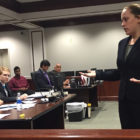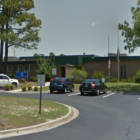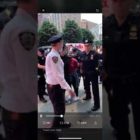
North Carolina Advocates Hope to Work on Racial Bias in Wake of Raise the Age
|
Orange County in North Carolina has two school districts. One is much tougher than the other on students caught with marijuana on campus.
Juvenile Justice Information Exchange (https://jjie.org/page/48/)

In late September, Torri was driving down the highway with her 11-year-old son Junior in the back seat when her phone started ringing.
It was the Hamilton County Sheriff’s deputy who worked at Junior’s middle school in Chattanooga, Tennessee. Deputy Arthur Richardson asked Torri where she was. She told him she was on the way to a family birthday dinner at LongHorn Steakhouse.
“He said, ‘Is Junior with you?’” Torri recalled.
Earlier that day, Junior had been accused by other students of making a threat against the school. When Torri had come to pick him up, she’d spoken with Richardson and with administrators, who’d told her he was allowed to return to class the next day. The principal had said she would carry out an investigation then. ProPublica and WPLN are using a nickname for Junior and not including Torri’s last name at the family’s request, to prevent him from being identifiable.
When Richardson called her in the car, Torri immediately felt uneasy. He didn’t say much before hanging up, and she thought about turning around to go home. But she kept driving. When they walked into the restaurant, Torri watched as Junior happily greeted his family.
Soon her phone rang again. It was the deputy. He said he was outside in the strip mall’s parking lot and needed to talk to Junior. Torri called Junior’s stepdad, Kevin Boyer, for extra support, putting him on speaker as she went outside to talk to Richardson. She left Junior with the family, wanting to protect her son for as long as she could ...

Orange County in North Carolina has two school districts. One is much tougher than the other on students caught with marijuana on campus.

It was his first time at a protest. Many thoughts crossed the mind of Eithan Roy, a 16-year-old boy from the Bronx, on the train ride to Brooklyn, Friday afternoon. One of them was the memory of his aunt, who went out and protested the killing of Trayvon Martin in 2012 and told him about it.

As protests erupt in cities across the nation following George Floyd’s death in police custody, youth-serving agencies appear to have a similar view of their role. Their job is to support young people, provide safe space for them and, in many cases, bring their voices and experiences into the public realm to solve public problems.

In North Carolina, adult prisoners will build a new confinement facility for juvenile offenders, officials announced. After expanding its juvenile system’s jurisdiction to include 16- and 17-year-olds, the state anticipates a need for more beds for youth who have been adjudicated.

As COVID-19 made shared transportation a potential enabler of disease transmission, it became clear that the introduction of videoconferencing equipment couldn’t have come at a more auspicious time for courthouses and juvenile detention centers across North Carolina.

The young girl is weeping and terrified, surrounded by members of the New York Police Department, her hands cuffed behind her back while outraged protesters shout a mix of pleas and threats to let her go. The chaotic scene was captured on a 21-second snippet of video that was deleted from Twitter about 10 minutes after being posted.

Teens On Target (TNT) is a leadership development program at Youth ALIVE!, Oakland, Calif.’s anchor agency for violence prevention, intervention and healing. Through TNT, teens from two high schools in the Oakland neighborhoods hardest hit by gun violence teach student-designed violence prevention workshops at middle schools across the city.

Today, Synthia Roy works at a tattoo parlor in Jacksonville, Fla., she does set design and makeup for horror films and recently produced her second movie.